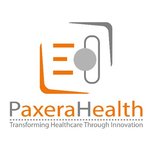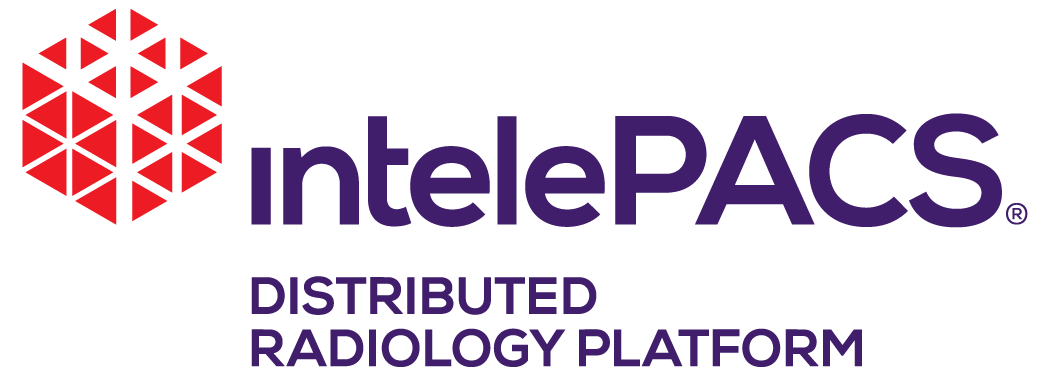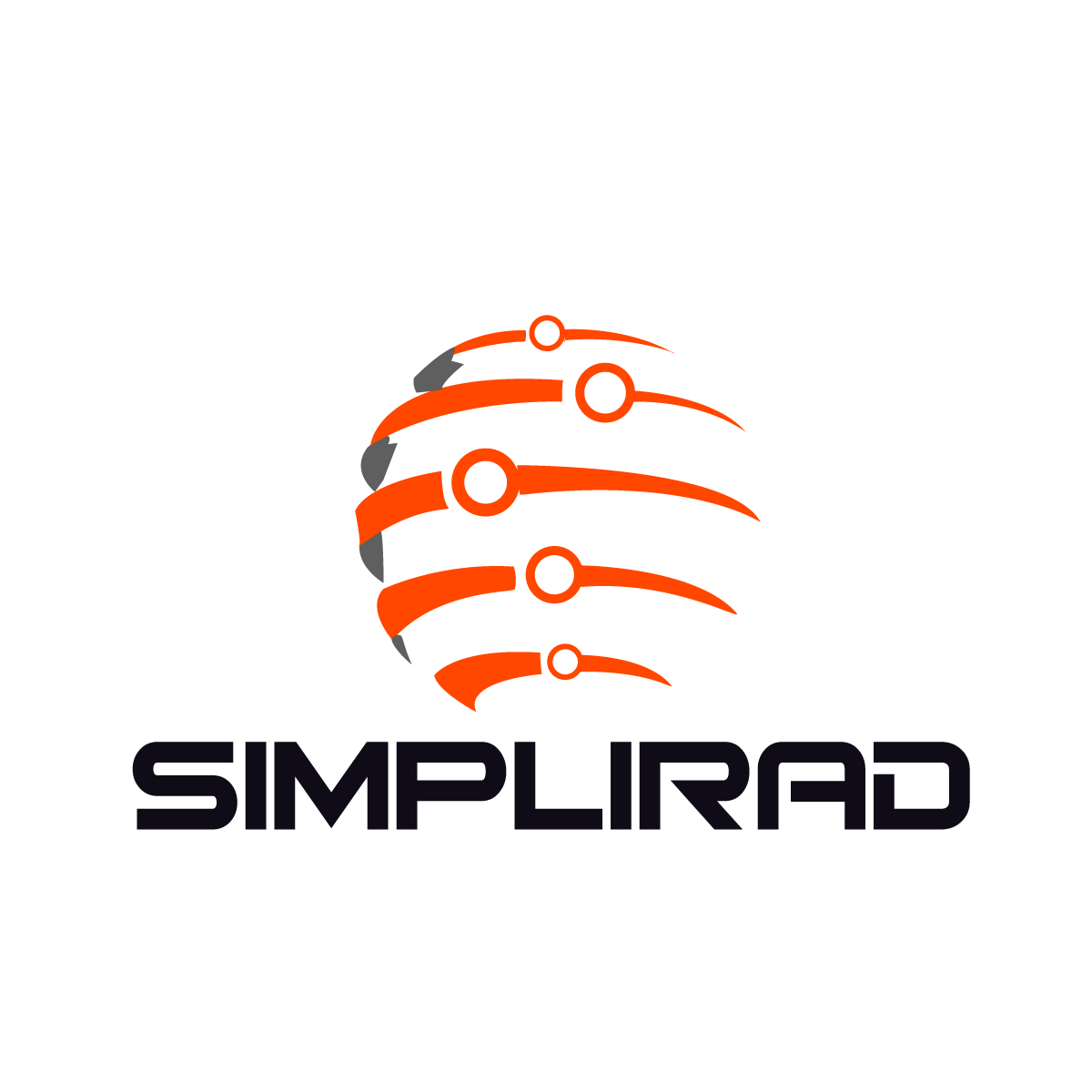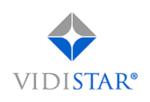Yes, most modern PACS software may be accessible from a variety of devices and platforms, including desktops, tablets, and smartphones. This enables healthcare practitioners to see and evaluate medical pictures from their preferred device, regardless of their location. PACS software is designed to work with a variety of operating systems and web browsers, making it simple to retrieve patient data and images across multiple platforms.
List of Best PACS Software
Ultima 360 solution for effortless data management with just one login. Our state-of-the-art diagnostic viewer offers customizable options for a seamless user experience. Stay updated with a complete record of all actions through our inclusive audit...Read More Ultima 360
IntelePACS is a radiology solution ideal for hospitals, imaging centers, and teleradiology organizations. With a distributed platform, it allows for easy storage, retrieval, and routing of medical images. Its user-friendly interface simplifies comple...Read More IntelePACS
cPAC - Cloud PACS is a imaging platform for healthcare professionals. Developed to simplify the process of sharing exams and integrate seamlessly with electronic health records, this cloud-based solution offers secure access to patient studies. With...Read More cPAC - Cloud PACS
syngo.plaza is a imaging software developed by Siemens Healthineers. This revolutionary software streamlines radiology processes, enabling effortless image management and rapid access to patient information. syngo.plaza seamlessly integrates with var...Read More syngo.plaza
Suitestensa CVIS PACS, the top-notch cardiovascular information system that revolutionizes imaging and data management for healthcare professionals. With its fluid integration and advanced functionalities, this software elevates diagnostic accuracy a...Read More Suitestensa CVIS PACS
Simpliradâ„¢ is the radiology software utilizing AI technology. This cutting-edge cloud-based solution offers a comprehensive RIS PACS system, streamlining image and data management for radiologists and healthcare provide...Read More Simplirad
Videoma Health is aplatform that simplifies healthcare video management. Seamlessly integrating with HIS/RIS and PACS systems, it provides a centralized repository for all medical video files. This streamlines workflow and improves patient care by al...Read More Videoma Health
GALAXY RIS is a cloud-based Radiology Information System software. Created to streamline and optimize radiology operations in hospitals and healthcare facilities, GALAXY offers a simple and intuitive interface, enabling easy access from anywhere. Say...Read More GALAXY RIS
Aidoc, a AI-powered healthcare software that streamlines clinical workflow and elevates patient outcomes. Seamlessly compatible with existing IT systems, Aidoc offers real-time alerts and rapid imaging analysis. Designed to optimize workload manageme...Read More Aidoc
Exa PACS solution for streamlining your diagnostics process! With our customizable dashboard, experience unparalleled efficiency and performance tracking. Enjoy the convenience of accessing our zero footprint viewer on any consumer-grade PC, no addit...Read More Exa PACS
MatrixRay, a software designed to enable effortless and protected sharing of imaging data on the internet. With its convenient online storage capabilities, MatrixRay eliminates the hassle of using external devices for storing and accessing medical im...Read More MatrixRay
ProtonPACS is a PACS solution that offers cutting-edge technology and unparalleled support. Our robust hosting and dependable infrastructure - both offsite and onsite - guarantee lightning-fast operations. Continuous maintenance, licensing, and hardw...Read More ProtonPACS
VEPRO PACS/EMR: a comprehensive solution designed to simplify access to crucial data for medical professionals, without the need for a web campus studio license. This robust system stores all types of information, including DICOM images, in a central...Read More VEPRO PACS/EMR
Tricefy is a platform for smooth transmission and reception of imaging data. Take advantage of its secure networking and mobile accessibility to effortlessly share imaging reports with colleagues and patients. Experience the benefits of its reliabili...Read More Tricefy
Studycast is a and sophisticated software designed to access and complete your studies in a secure manner, from any location. Specifically developed for healthcare modalities, Studycast offers advanced enterprise-level features for effectively managi...Read More Studycast
eRAD PACS Evolution - a software designed to enhance the viewing experience for PACS users. Featuring advanced workflow capabilities and customizable features, it offers a modern interface for a smooth and efficient diagnostic experience. Its diagnos...Read More eRAD PACS Evolution
MiPACS Storage Server - the perfect solution for efficiently managing, storing, and sharing PACS images and DICOM objects at a reasonable cost. With its user-friendly interface and customizable design, MiPACS is effortless to install and can easily a...Read More MiPACS
VidiStar PACS solution for all your healthcare needs. With customizable features and user-friendly interface, it efficiently meets the demands of value-based medicine. Benefit from its advanced predictive analytics, decision support, and data mining...Read More VidiStar PACS
Learn More About PACS Software
- What Is PACS Software?
- What Are The Recent Trends In PACS Software?
- Benefits Of Using PACS Software
- Important Factors To Consider While Purchasing PACS Software?
- What Are The Key Features To Look for In PACS Software?
- Why Do Businesses Need PACS Software?
- How Much Time Is Required To Implement PACS Software?
- What Is The Level Of Customization Available In PACS Software?
- Which Industries Can Benefit The Most From PACS Software?
- Conclusion
What Is PACS Software?
PACS software, also known as Picture Archiving and Communication System software, is a specialized technology used in healthcare to store, manage, and share medical images and data. It offers healthcare providers a secure and accessible means to access, analyze, and share patient data, resulting in better patient care and workflow efficiency. PACS software, at its core, combines a combination of hardware and software tools to record, store, view, and distribute digital medical images such as X-rays, MRIs, CT scans, and ultrasounds.
These photos are subsequently saved in a single database, which is available to all authorized users at the healthcare center. One of the primary benefits of adopting PACS software is that it eliminates the need for real film images, which are time-consuming to develop and store. This not only saves space, but also lowers the likelihood of losing or destroying photographs.
Furthermore, PACS software enables quick picture retrieval, minimizing the time required to obtain patient information and improving diagnosis and treatment decisions. PACS software also includes advanced features such as image enhancement tools, measurement and annotation capabilities, and 3D reconstruction, which provide significant insights to healthcare professionals and improve diagnostic accuracy.
When choosing PACS software, it is critical to examine elements such as compatibility with existing systems, usability, security features, and scalability to meet future requirements. Furthermore, connectivity with other healthcare systems, such as electronic health records (EHR) and radiology information systems (RIS), should be explored to guarantee seamless data sharing and interoperability.
What Are The Recent Trends In PACS Software?
PACS (Picture Archiving and Communication System) software is a critical tool in the healthcare business for organizing medical images and records. Over time, technological improvements and shifting needs in the healthcare industry have resulted in the birth of certain key trends in PACS software.
We will look at the latest trends in PACS software to assist you make an informed decision when selecting a solution for your organization.
1. Cloud-Based PACS: One of the most significant changes in PACS software is the move to cloud-based systems. Cloud-based PACS enables healthcare organizations to store, view, and exchange medical pictures and records remotely, removing the need for expensive and cumbersome on-premise servers. With the growing need for telemedicine and remote work in the healthcare business, cloud-based PACS provides a secure and effective method of managing medical data.
2. AI Integration: AI has been making waves in the healthcare industry, and it has now made its way into PACS software. AI-assisted image analysis can help radiologists increase diagnostic accuracy and efficiency. It also enables automated and speedier image triage, lowering patient turnaround time. AI integration in PACS software has the ability to completely transform the image interpretation process.
3. Consolidation Of Multiple Systems: Previously, healthcare organizations had to invest in and manage multiple systems for various imaging modalities, such as X-ray, MRI, and CT scans. However, current trends have resulted in the integration of different systems into a single PACS solution. This not only lowers costs but also streamlines workflows and increases efficiency for healthcare professionals.
4. Vendor-Neutral Archive (VNA): Another growing trend in PACS software is the usage of Vendor-Neutral Archive (VNA). VNA allows you to store and manage medical photos and records from numerous sources in a single, self-contained archive. This prevents vendor lock-in and allows for smooth data transfer between healthcare facilities, regardless of the PACS software utilized.
5. Mobile Access And Integration: With the increase in mobile usage, PACS software providers have begun to enable mobile access to their systems. Healthcare providers can now access medical photos and records on their mobile devices, increasing the efficiency and flexibility of patient treatment. Furthermore, PACS software is increasingly being connected with Electronic Health Records (EHRs) to enable a smooth flow of patient information.
Benefits Of Using PACS Software
PACS, or Picture Archiving and Communication System software, is an effective tool for storing, organizing, and sharing medical images and data. It provides several advantages to healthcare facilities, making it an important investment for any firm.
We will look at the benefits of utilizing PACS software to help you make an informed decision when purchasing one.
1. Efficient Image Management: One of the primary advantages of PACS software is its ability to efficiently manage medical images. PACS stores all images in a centralized location, reducing the need for physical film storage. This not only saves space, but also lowers the possibility of losing or damaging films. Furthermore, PACS software provides quick access to pictures from any location, allowing healthcare practitioners to make faster and more accurate diagnoses.
2. Cost Reductions: PACS software can result in significant cost reductions for healthcare facilities. Facilities that do not require physical film storage can save on paper, storage, and maintenance expenditures. Furthermore, using PACS software lowers the need for repeat scans and tests, saving both time and money for patients and healthcare professionals.
3. Improved Teamwork And Communication: In the healthcare field, timely communication and teamwork are critical to providing quality care. PACS software allows medical pictures and data to be easily exchanged within departments and with outside healthcare professionals. This not only speeds up decision-making, but also decreases the possibility of miscommunication or data loss.
4. Improved Patient Care: PACS software can significantly improve patient care. With instant access to images and data, healthcare providers can make more timely and accurate diagnoses, resulting in better treatment outcomes. Furthermore, the usage of PACS software minimizes the likelihood of errors or misinterpretations, hence improving patient safety.
5. sophisticated Capabilities: Modern PACS software has sophisticated capabilities including 3D and 4D image reconstruction, computer-aided detection, and image processing. These tools can help healthcare practitioners identify irregularities and provide more accurate diagnoses, resulting in better patient outcomes.
6. Easy Integration With Other Systems: PACS software is intended to work easily with other healthcare systems, such as Electronic Medical Records (EMR) and Radiology Information Systems (RIS). This enables streamlined workflows and a more comprehensive patient record, resulting in efficient and effective care delivery.
Important Factors To Consider While Purchasing PACS Software?
When considering acquiring PACS software, several essential elements must be carefully considered in order to make the best decision for your organization.
Compatibility, scalability, functionality, security, and support are among the issues considered.
1. Compatibility: When choosing PACS software, one of the first things to examine is how it will work with your existing systems and technologies. Make sure the program integrates effortlessly with your existing gear and software, and that it is compatible with the systems used by other healthcare providers with whom you may need to share data. In addition, determine whether the software is compatible with all sorts of medical photos and can manage huge file sizes.
2. Scalability: Consider the software's scalability, especially if your facility plans to grow or add new sites in the future. Look for a PACS solution that can expand and adapt to your changing requirements, including greater storage and handling of a growing volume of medical pictures. This will spare you the difficulty and expense of switching to a new system in the future.
3. Functionality: Next, assess the functionality of the PACS software. Consider the capabilities and tools it provides for image management, viewing, and sharing. Look for automated workflows, configurable viewing options, and advanced picture analysis tools. To guarantee a smooth operation, the software should have a user-friendly interface that is simple for employees to use.
4. Security: Given the delicate nature of medical pictures, security is a high priority when selecting PACS software. Make sure the program complies with HIPAA regulations and has strong security mechanisms in place to secure patient data. Encryption, access limits, and audit trails are all elements that can help protect patient data security.
5. Support: Choose a PACS vendor who provides excellent technical support and training to help you get the most out of your software. This is especially critical during the implementation phase, as well as for subsequent maintenance and upgrades. Look for a vendor who delivers prompt and attentive customer assistance as well as thorough employee training choices.
What Are The Key Features To Look for In PACS Software?
When selecting PACS (Picture Archiving and Communication System) software, you should consider many essential aspects to ensure that you are making the best option for your company or organization. These capabilities will assist you in properly managing and storing medical photos, improving productivity, and increasing efficiency.
Here are the key characteristics to consider when searching for a PACS software:
1. Integration With Existing Systems: Select PACS software that works seamlessly with your current systems, such as Electronic Health Records (EHR) and Radiology Information System (RIS). This prevents disruptions to your production and guarantees that data is transferred smoothly between platforms.
2. Image Viewing And Storage Capabilities: The fundamental role of PACS software is to save and display medical images. Make sure the program can hold a variety of medical images, including X-rays, MRIs, CT scans, and ultrasounds. It should also support advanced viewing features such as zoom, pan, and window/level modifications.
3. Security And Compliance: Because medical images contain sensitive and confidential patient information, it is critical to choose PACS software that complies with HIPAA requirements. It should include features such as role-based access control, data encryption, and audit trails to maintain the security and privacy of patient data.
4. Cloud-Based vs. On-Premise: PACS software is available in both cloud and on-premise versions. The decision between the two will be based on your organization's specific needs and preferences. While cloud-based software allows for remote access and fast scaling, on-premise software provides better control over data and customization choices.
5. Mobile Accessibility: In today's fast-paced environment, having access to medical imaging while on the go is critical. Look for PACS software that is mobile-compatible, so you may access images and patient data from any device, at any time.
6. Advanced Tools And Features: Depending on your organization's specific requirements, you may need extra tools and features including 3D reconstruction, fusion imaging, and reporting capabilities. Make sure to evaluate the software's advanced features to ensure that it matches your needs.
7. Usability: A user-friendly interface is required to ensure that the product is used efficiently. Look for PACS software with an intuitive and user-friendly interface to save time and effort when training and learning the system.
Why Do Businesses Need PACS Software?
Picture Archiving and Communication System (PACS) software is an essential tool for medical imaging organizations. It enables the effective storage, management, and distribution of digital pictures including X-rays, CT scans, and MRIs. One of the primary reasons firms require PACS software is to increase productivity and save costs. This technology eliminates the need to process, store, and retrieve actual film and paper files, which can be time-consuming and costly.
Instead, PACS software enables quick and easy access to digital pictures, minimizing the requirement for physical storage space and equipment. Furthermore, PACS software allows organizations to optimize their workflow while increasing the speed and accuracy of diagnosis and treatment. Healthcare practitioners may now see and analyze medical pictures from any connected device, at any time and from any location.
This saves significant time and resources, resulting in improved patient care and outcomes. Data security and compliance are also important reasons why firms need PACS software. This program has extensive security features such as role-based access control and encryption, which ensure patient information is kept safe and protected from unauthorized access.
Furthermore, PACS software is designed to meet regulatory criteria like as HIPAA, providing piece of mind to both enterprises and patients. Incorporating PACS software into a firm also enables smooth collaboration and communication between healthcare practitioners. Interoperability capabilities enable the exchange of images and information between departments, facilities, and even across systems.
This enables faster and more accurate diagnosis and treatment, leading to better patient care. Finally, with the rise of telemedicine and remote consultations, businesses require PACS software to allow the quick and secure transfer of medical images. Whether for virtual appointments or remote consultations with specialists, PACS software enables the real-time transmission of accurate and high-quality pictures, promoting efficient and effective communication among healthcare providers.
How Much Time Is Required To Implement PACS Software?
The installation time for PACS software varies depending on several aspects, including the size of the organization, the complexity of the project, and the chosen vendor's implementation procedure. The implementation process typically takes 3-6 months, however it may take longer for larger enterprises with several locations. During the implementation process, the vendor will work closely with the company to tailor the software to their specific requirements.
This may include configuring the system, creating user accounts, and integrating the program with existing systems. The time necessary for training and user adoption might have an impact on the total deployment timeline. Organizations must set aside adequate time for training to ensure that users are comfortable and proficient in utilizing the new software.
Unexpected obstacles or delays may also have an impact on the implementation process. Therefore, it is critical to find a credible vendor with a demonstrated track record of successful installations. To help with the implementation process, some providers provide pre-configured templates and rapid deployment solutions. However, certain companies may want a higher level of customisation than these alternatives offer.
What Is The Level Of Customization Available In PACS Software?
PACS (Picture Archiving and Communication System) software is a must-have in modern healthcare institutions, as it simplifies medical image storage, retrieval, and sharing. PACS, like any other software, offers a variety of capabilities and levels of customization. In this buyer's guide, we'll look at the level of flexibility available in PACS software, so you can make an informed decision for your institution. Customization is essential because each healthcare facility has distinct demands and workflows. PACS customisation allows you to personalize the program to your individual needs, assuring maximum efficiency and accuracy in image handling. So, what level of customization should you expect from PACS software?
Let us find out.
1. Interface Customization: The interface is what users engage with, thus it should be simple and intuitive. Most PACS software provides some level of interface customization, allowing you to change the layout, color scheme, and tool placement to your liking. Some systems even have customizable dashboards, making it easier to access commonly used functions.
2. Workflow Customization: Efficient workflow is critical in healthcare, and PACS software should accommodate your facility's specific workflow. Most systems have customized workflows, which automate certain operations and streamline processes. You can also tailor the system to your facility's rules, assuring compliance and uniformity in picture management.
3. Customizable Reporting Templates: PACS software has a reporting capability that allows radiologists to add their interpretations and annotations to pictures. Advanced systems include customizable reporting templates, allowing for consistent and comprehensive reports that are tailored to your facility's requirements. This tool improves reporting accuracy and uniformity while also saving time.
4. Data Management: The degree of customisation in data management differs amongst PACS software. However, most systems allow for some level of customization in data arrangement and storage. You can set the system to arrange images based on specified criteria like patient name, date, or image kind. Some systems also allow for data migration from earlier systems, which makes the changeover go more smoothly.
5. Integration With Other Systems: In a healthcare facility, multiple systems and equipment must communicate and share data seamlessly. PACS software with customization possibilities allows for integration with other systems such as EMR and RIS. This connection not only simplifies process, but it also increases data accessibility and accuracy.
Which Industries Can Benefit The Most From PACS Software?
The PACS (Picture Archiving and Communication System) software has transformed the way medical images are stored, exchanged, and managed in healthcare facilities. However, the benefits of PACS software extend beyond the healthcare industry.
In fact, many other businesses could profit substantially from incorporating this technology.
1. Healthcare Industry: The healthcare industry is the obvious choice for PACS software use. With a rising number of medical images generated each day, it is critical to have a system that can store and retrieve these images promptly and efficiently. PACS software enables healthcare facilities to centralize all medical pictures, making them more accessible and shareable with other medical experts. It also contributes to improving overall productivity, minimizing human errors, and increasing diagnostic accuracy.
2. Veterinary Industry: Similar to the healthcare business, the veterinary industry handles a significant amount of medical images, such as X-rays, MRI scans, and so on. PACS software can help to streamline the storage and management of these pictures, allowing veterinarians to review and share them with other specialists as needed.
3. Research And Scientific: Organizations Imaging investigations create a large amount of data in research and scientific institutions. PACS software allows for the storage and management of this data in a centralized system, making it conveniently available to researchers and scientists. It also offers a safe environment for sharing and collaborating on these photos, resulting in more precise and efficient study results.
4. Industrial And Manufacturing Companies: PACS software is not exclusive to the medical profession. It can also be used by industrial and manufacturing businesses that work with large-scale equipment and machines. These businesses can keep images of equipment, parts, and maintenance records in a PACS system, making it easier to track and analyze performance and spot potential problems.
5. Government And Military Organizations: Government and military organizations produce a large number of medical photographs for a variety of objectives. PACS software can assist in securely storing and preserving these pictures, as well as offering a platform for rapid and efficient exchange with other agencies or medical specialists. It can also help with disaster recovery by providing real-time access to medical photos in the event of an emergency.
Conclusion
In conclusion, purchasing PACS software is an important decision for every healthcare facility or medical practice. It has numerous benefits, including increased efficiency and cost reductions, as well as improved patient care and data management. When choosing PACS software, you should analyze your facility's specific demands and requirements.
Conducting thorough research and demos, ensuring compatibility with existing systems, and getting suggestions from other healthcare professionals will help you select the best solution for your organization. Furthermore, check for features like configurable workflows, safe storage and sharing options, connectivity with different imaging modalities, and an easy-to-use interface. This will improve not only the software's general functionality, but also the user experience and adoption rate.
Furthermore, selecting a credible and knowledgeable provider with a successful track record in the healthcare field is critical. They can give support and assistance with the software's setup and maintenance, as well as staff training. While cost may be an issue, it is critical to consider the long-term value and return on investment that high-quality PACS software may provide. A dependable and effective PACS software may simplify operations, decrease errors, and ultimately improve patient outcomes and satisfaction.
To summarize, investing in PACS software is a sensible move for any healthcare organization trying to improve its imaging and data management procedures. By carefully considering your organization's requirements and thoroughly researching and selecting a dependable and feature-rich solution, you can ensure a successful installation and, ultimately, better patient care.
PACS Software FAQ's
Can PACS Software Be Accessed Across Multiple Devices And Platforms?
Is PACS Software Future-Proof And Adaptable To Emerging Technologies Like AI, Blockchain Or IoT?
Yes, PACS software is continually changing to keep up with emerging technologies such as artificial intelligence, blockchain, and the Internet of Things. Many healthcare facilities are already incorporating these technologies into their PACS systems to improve workflows and patient care.
PACS software providers also offer monthly updates and upgrades to ensure compatibility with these systems. This makes PACS software a future-proof solution capable of adapting to the ever evolving healthcare landscape.
Is There A Free Trial Offered To Assess PACS Software Before Committing?
Yes, many PACS software companies provide a free trial period for interested customers to evaluate the program before making a purchase. This enables users to evaluate the functionality, user interface, and interoperability with their systems. Some free trials may have restricted access, but others may provide full capability for a limited time. It is recommended that you use free trials to confirm that the program matches your requirements before making a commercial commitment.
Does PACS Software Offer Data Security Features And Meet Regulatory Compliance Standards?
Yes, most PACS software includes strong data security features including encryption and access controls to protect the confidentiality, integrity, and availability of patient pictures and data. Furthermore, PACS software is built to meet regulatory compliance standards such as HIPAA and HITECH, which ensure that patient data is stored and sent securely and in accordance with privacy regulations. PACS software ensures the security of your patient's data.
Can PACS Software Integrate Seamlessly With Existing Tools And Platforms?
The PACS (Picture Archiving and Communication System) software is designed to work with a variety of tools and platforms, allowing for smooth integration. PACS can be integrated with existing EMR systems, RIS, and other medical imaging devices using established protocols and interfaces such as DICOM.
This enables fast data interchange and improved workflow, resulting in better patient care and lower expenses. PACS software's flexible nature allows it to be tailored to the specific requirements of any healthcare facility.




















